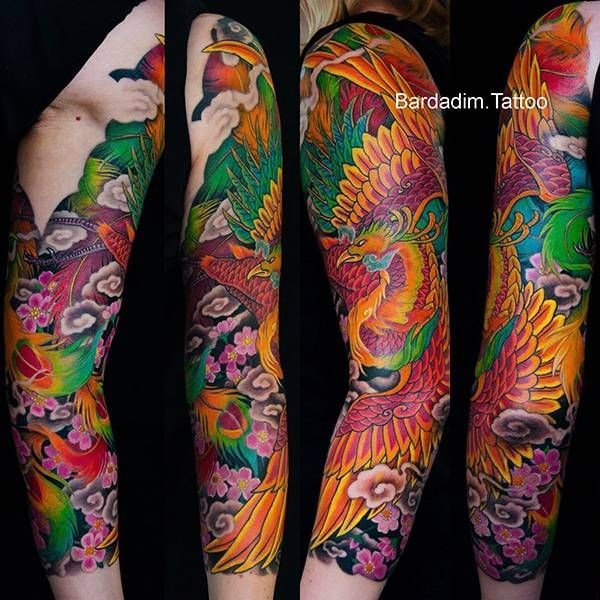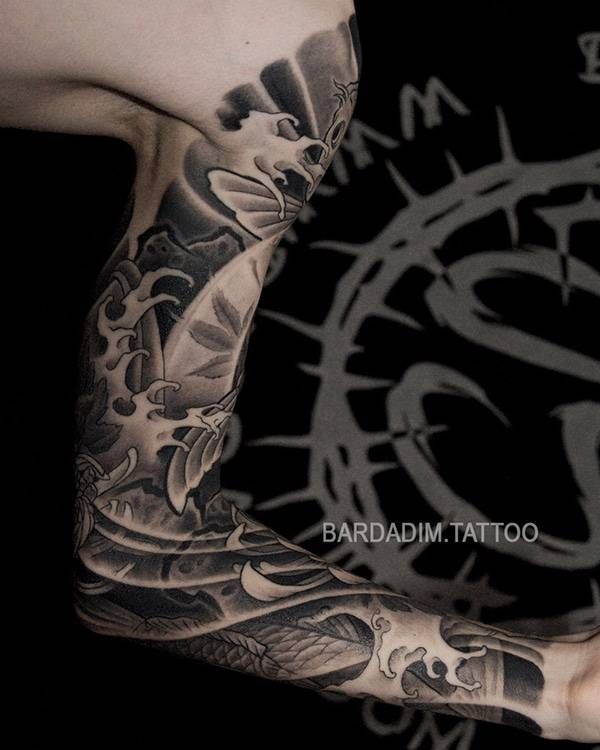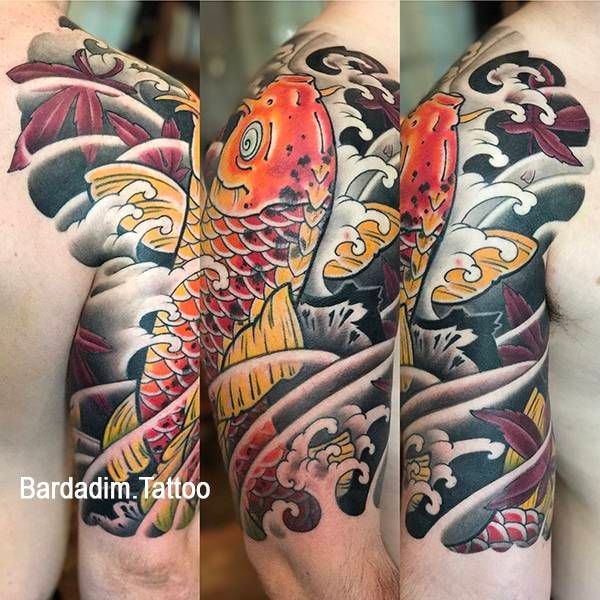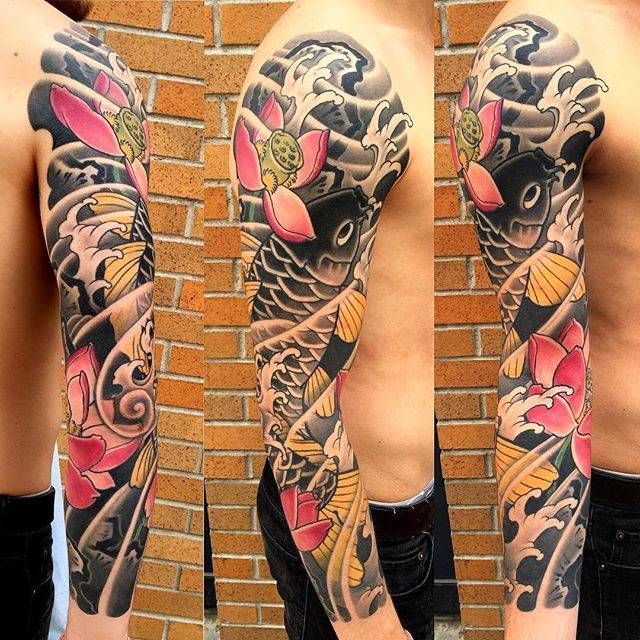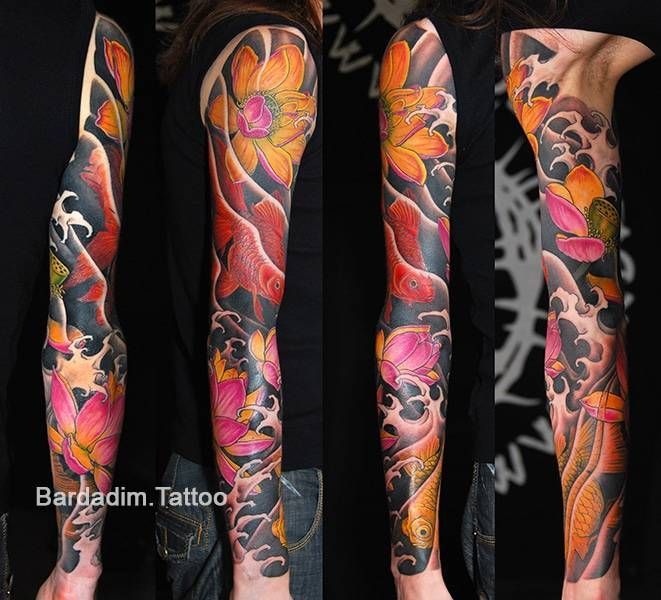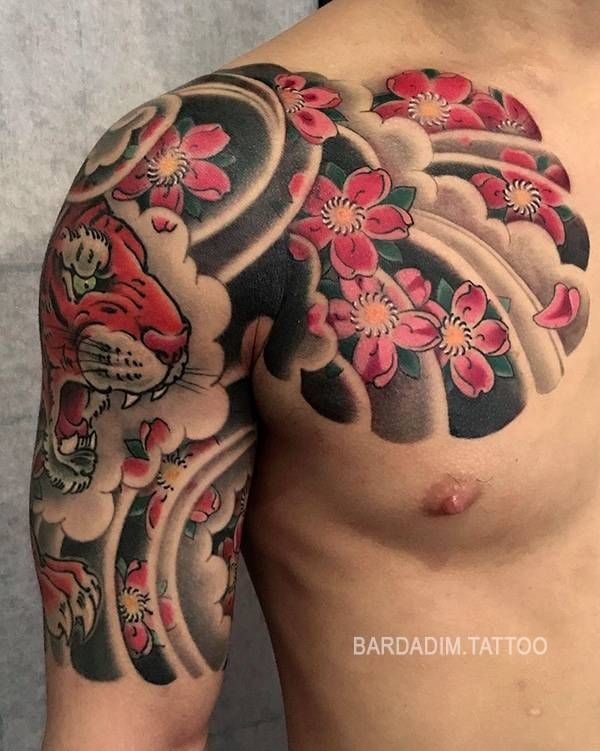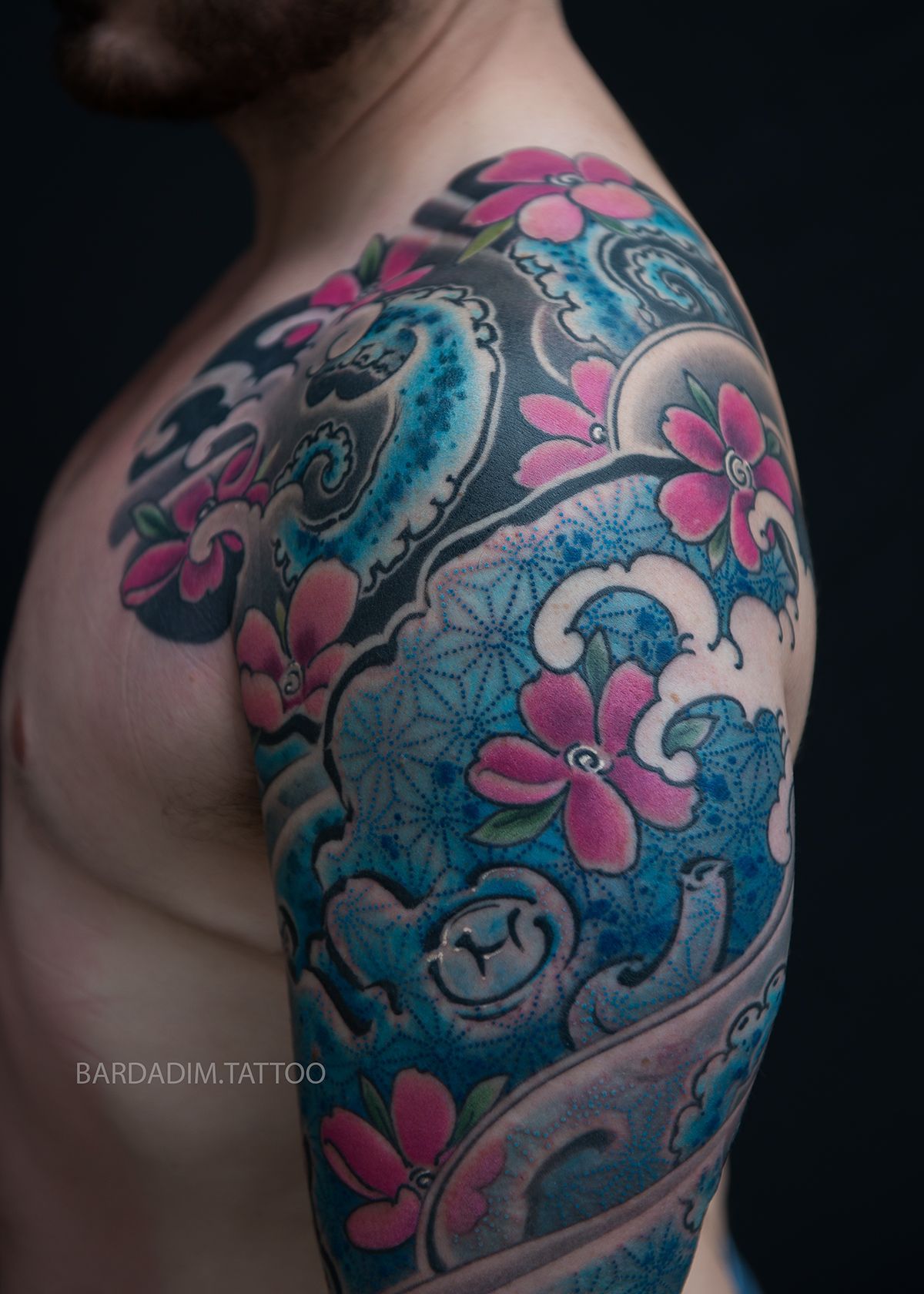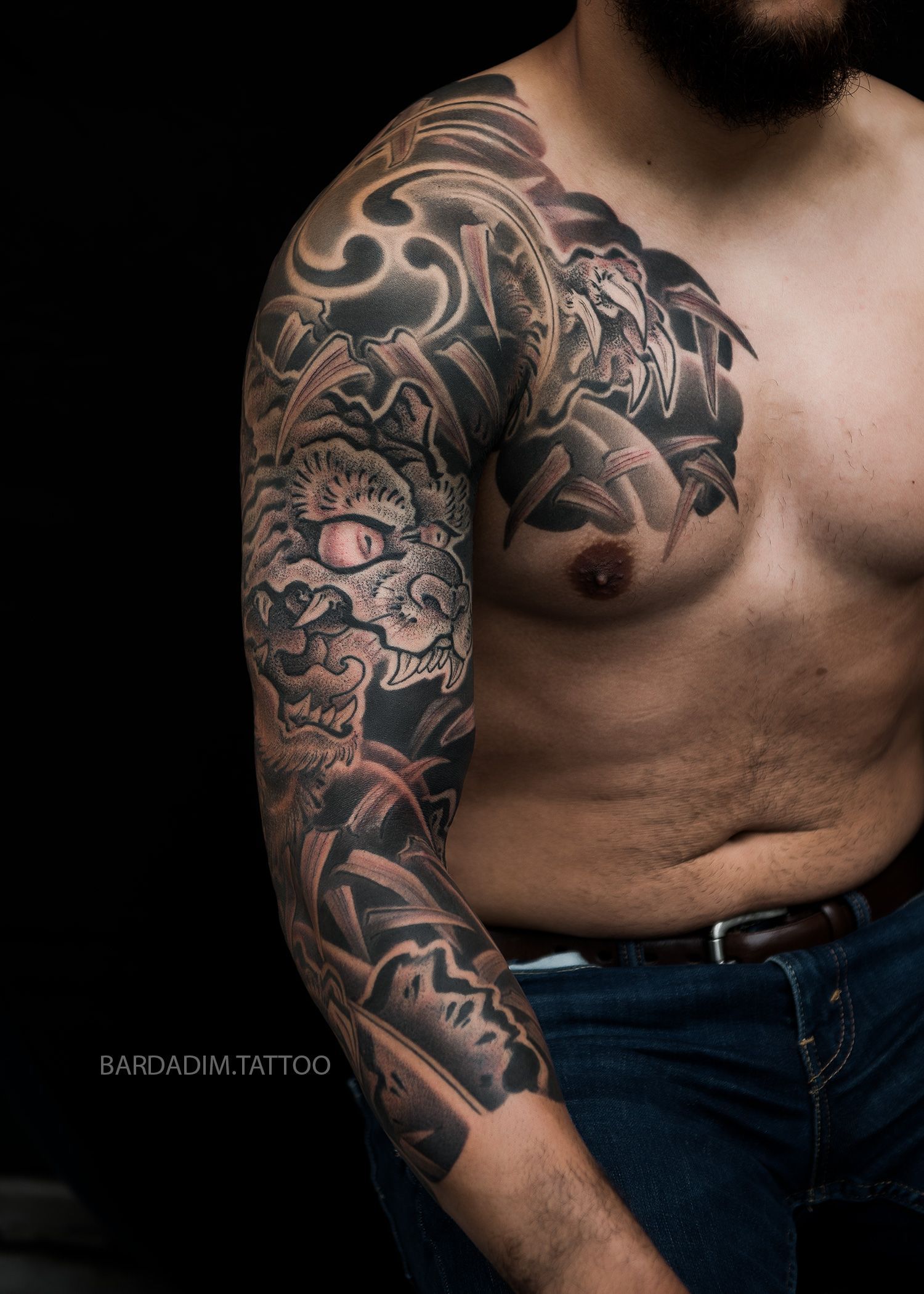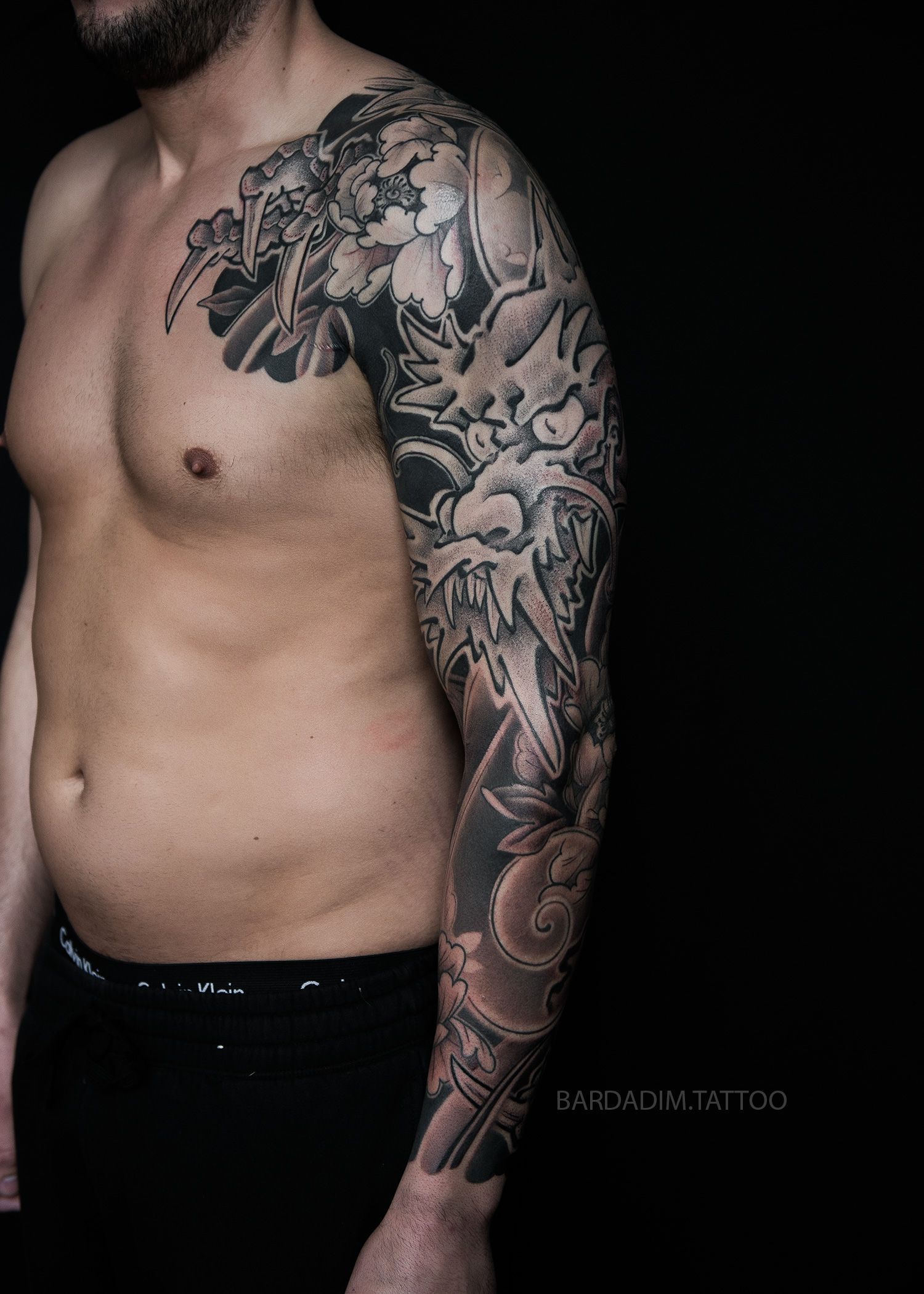Traditional Japanese Tattoo
Traditional Japanese Tattoo – Traditional Irezumi (an art form in itself) is still done by specialized tattooists, it is painful, very time-consuming and expensive : a typical traditional body suit (Vest or jacket, long or Short Sleeves, Long or Short Pants, and traditionally leaving an un-tattooed space down the centre of the body) can take, on average, one to five years of weekly visits to complete, showing that the person with heavy Irezumi will finish what he or she starts and can be very respected for it, and the imagery that is in a persons Irezumi can be viewed to see the aspirations of that individual.
TATTOOS IN MODERN JAPAN ( by Irezumi Art UK )
At the beginning of the Meiji “1869″ period the Japanese government, wanting to raise its image and make a good impression on the West, outlawed tattoos, and Irezumi took on connotations of criminality. Nevertheless, fascinated foreigners went to Japan seeking the skills of tattoo artists, and traditional tattooing continued underground. There is a story that the British monarch, King Edward VII had a Japanese tattooist brought to him and had dragons put on his fore arms and then sent the tattooer to New England to have his friends in America tattooed by him as well, as a gift of good will & friendship.
Tattooing was legalized by the occupation forces in 1945, but has retained its image of criminality. For many years, traditional Japanese tattoos were associated with the Yakuza, Japan’s notorious Mafia, and many businesses in Japan (such as public baths, fitness centres and hot springs) still ban customers with tattoos.
KOI (CARP)
Probably surprising to many westerners is the very large amount of ancient myths that surround these beautiful fish in the orient, and their elevated status there. The koi is more than just a colourful and collectible fish, it is also one of the most popular and beautiful story, myth, tale and tattoo themes, a beauty which belies its symbolic meaning. Although Chinese in origin, the koi is now widely celebrated in Japan, particularly for its masculine qualities. It is said to climb waterfalls bravely, and, if caught it will lie upon the cutting board awaiting the knife without a quiver, not unlike the warrior facing the sword.
Eventually, the stoic fish came to be associated with so many masculine and positive qualities that it was appropriated for the annual “Boys day festival” in Japan where even today colourful, streaming koi flags are traditionally displayed for each son in the family. In tattoo imagery, especially in combination with flowing water, it symbolizes much the same courage, control, and the ability to achieve goals with an understanding of life’s trials”.
HASU (LOTUS)
Lotus flowers are amazing and have strong symbolic ties to many Asian religions, especially throughout India and the lotus has become a symbol for awakening to the meaning of life. The meaning varies slightly between myth to myth of course but essentially religious traditions place importance on the lotus flower.
In modern times the meaning of a lotus flower tattoo ties into it’s religious symbolism and meaning. Most tattoo enthusiast feel that the a lotus tattoo represent life in general. As the lotus flower grows up from the mud into a object of great beauty people also grow and change into something more beautiful (hopefully!). So the symbol represent the struggle of life at its most basic form.
Lotus and peonies are flowers that are very popular among Japanese tattoo artists and they make a great compliment to Koi tattoos. Ironically enough, the two, koi fish and lotus flowers can often be found in the same pond in front of a temple. The Koi fish is a symbol typically for strength and individualism.
Tattoo Artist – George Bardadim, NYC -Traditional Japanese Tattoo in Brooklyn. Tattoo Shop NYC


